With Korea’s August 15th Liberation Day occurring this weekend, I think it’s a good time for another edition of this blog’s occasional “Independence Series.”
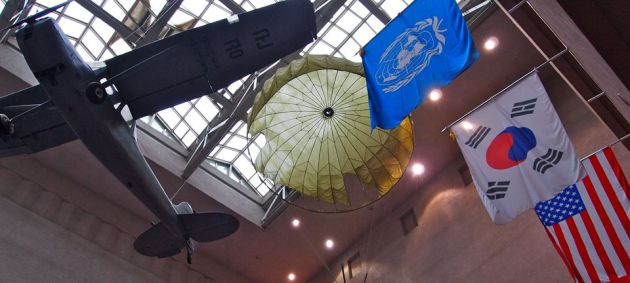
In the past we’ve covered important sites in Korea’s fight against its colonial oppressors. But this week we’ll look at a museum dedicated to war and peace, the War Memorial of Korea (전쟁기념관).
Opened in 1994, the War Memorial of Korea is located on the former site of the Army’s Headquarters in the Yongsan-dong neighborhood of central Seoul.
A better name for war complex is probably “museum,” as there are over 13,000 items on display in six exhibition rooms, as well as an Outdoor Exhibition Area that features over 100 mothballed fighter jets, tanks and artillery batteries.
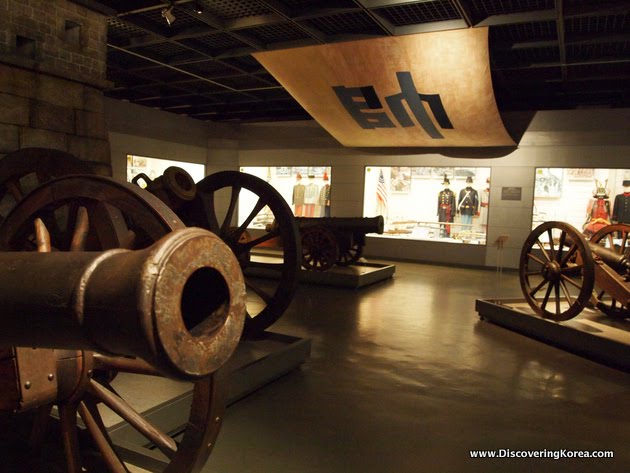
The War Memorial of Korea’s centerpiece is the imposing, six-story Memorial Hall (four aboveground and two underground levels) that’s set back from the street by a long granite ramp, two symmetrical ponds and a Peace Plaza.
Inside the Hall, exhibits do an excellent job of illustrating the many internal and external conflicts that have ravaged the Korean Peninsula over the centuries.
Be it invasions by the Mongols, the Chinese, the Japanese, the Russians or inter-Korean fighting amongst regional kings, the War Memorial’s 20,000 square meters document the remarkable resilience and sacrifice that has enabled South Korea to exist today.
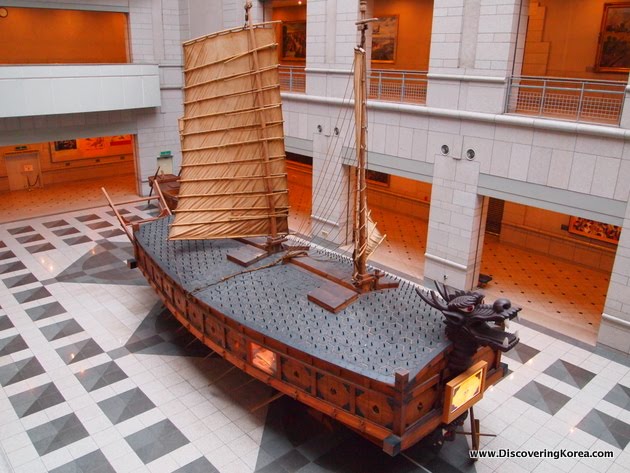
Of course, 2010 marks the 60th anniversary of the Korean War, which broke out when North Korean troops invaded the South on June 25, 1950. And the War Memorial of Korea’s greatest amount of floor space is committed to exploring this tragic, fratricidal war in great detail.
Although English signage is somewhat limited, the displays, translated videos and free English tours enable visitors to fully grasp the museum’s intent – to grasp the Korean War from the South Korean perspective.
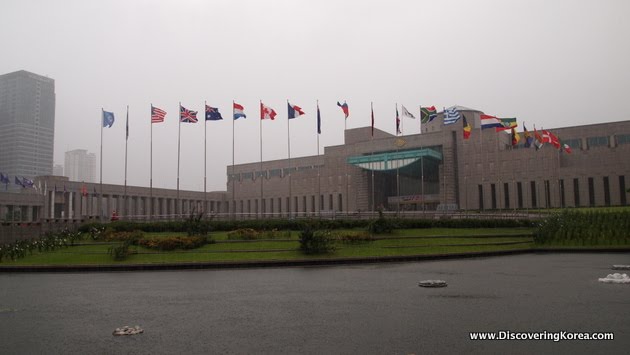
From the flag poles outside the hall to the memorial plaques inside, the exhibits also pay respect to the sixteen countries, that, as part of the United Nations command, also sacrificed soldiers on South Korea’s behalf.
Perhaps the most emotional part of the site is the “Statue of Brothers.” Located in the War Memorial of Korea’s southwest corner, the 18-by-11 meter sculpture depicts two brothers – one fighting for the South, the other for the North – who have met in a battlefield.
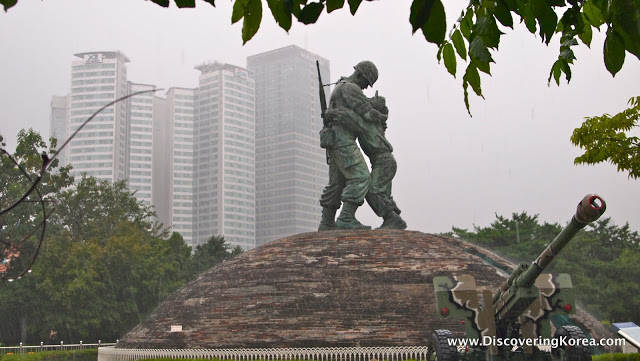
Their embrace expresses love, reconciliation and forgiveness. Beneath their feet is a cracked dome constructed of granite collected from various parts of the nation. Inside the dome is a wall painting and plaques representing South Korea’s wartime allies.
Although Korea’s neighbors, like China and Japan, can also boast spectacular ancient histories with impressive relics and cultural treasures, perhaps Korea’s 20th Century history is more compelling than its neighbors’.
Just five years after gaining independence from its colonial overlords, Korea was to be divided by a war that killed or wounded nearly five million people.
Given that the Korean War officially continues to this day, the lessons seen at the War Memorial of Korea seem all the more relevant even now.
For Your Information..
| Open: | 09:00-18:00 (Ticket sales stop 1-hour before close), Closed Mondays |
| Price: | ₩3,000 for adults, ₩2,000 for students |
| Address: | Seoul Yongsan-gu Yongsan-dong 1(il)-ga 8 |
| Directions: | Samgakji Station (#428/#628) on Lines 4 & 6, Exit 12 |
| Phone: | 02-709-3139, 3114 |
| Website: | Official Website |
About Matt Kelley
Matt Kelly is native of the US Pacific Northwest and is half-Korean by ethnicity. He lived in Korea for five years and has written hundreds of travel guides for Wallpaper, TimeOut, the Boston Globe and Seoul Magazine and was a host for several different variety shows on Korean radio and television.
